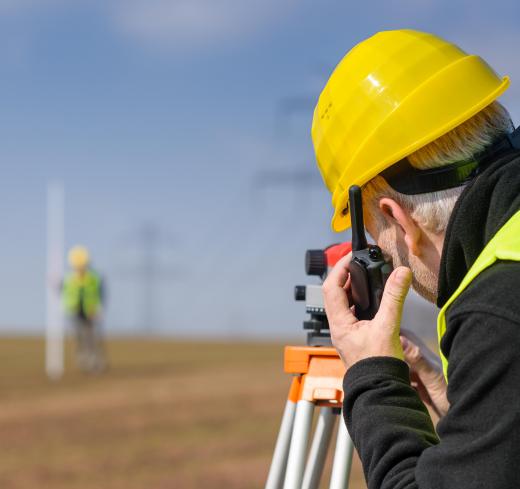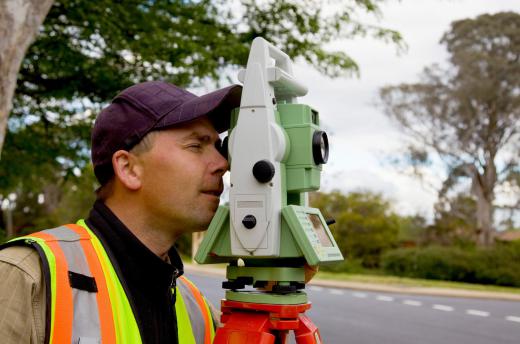Tacheometry is a method of measuring both horizontal distance and vertical elevation of a point in the distance, without the use of sophisticated technology, such as electronic distance measurement (EDM) or satellite transmissions. Traditional surveying techniques that involve taping, pacing, or odometers are also not used. It is considered less accurate than the most modern methods of surveying, but it is still of practical value in topographic mapping for regions that don't have access to high technology.
There are several different types of system, including the stadia, subtense bar, and optical wedge systems. The stadia tacheometry method is the most commonly used, however, and it incorporates a theodolite controlled by one operator and a level staff with precise, measured markings on it held by another surveyor at a distance. The theodolite is essentially a custom telescope with horizontal and vertical cross hairs. It is pointed at the staff, and vertical and horizontal angles are displayed in relation to markings on the staff, which determines distance and elevation. The two horizontal markings on the theodolite are known as stadia hairs, which are an equal distance above and below a horizontal line, and they cross a central vertical cross hair line.

Theodolites used in this process have varying levels of sophistication. The first types made in the early 19th century had fixed stadia hairs and an ability to flip over and sight in the reverse direction, so that a point of reference could be established to reduce measurement errors. Some newer theodolites have movable horizontal stadia hairs, and their position can be measured with a micrometer for more accurate horizontal and vertical sighting. Early ones were referred to as transit instruments and are still used for basic topographic mapping and quick measure uses, such as in archeology and geology, where precise measurements of distance and height are not required.

One of the advantages of tacheometry is that it is a rapid surveying method, and, if a basic theodolite is used, the equipment is fairly lightweight and easy to take into the field. It requires only two operators, one to hold the leveling rod with the stadia hair markings and one to measure it with the theodolite from a distance. The accuracy of the measured distances decreases as the distance between the leveling staff and theodolite increases. At a range of a quarter-mile (402 meters), the process is considered quite accurate, and, at a distance of 1 mile (1,609 meters), the error in horizontal distance is around 32 feet (9.75 meters) and 4 inches (10.16 centimeters) vertically.
